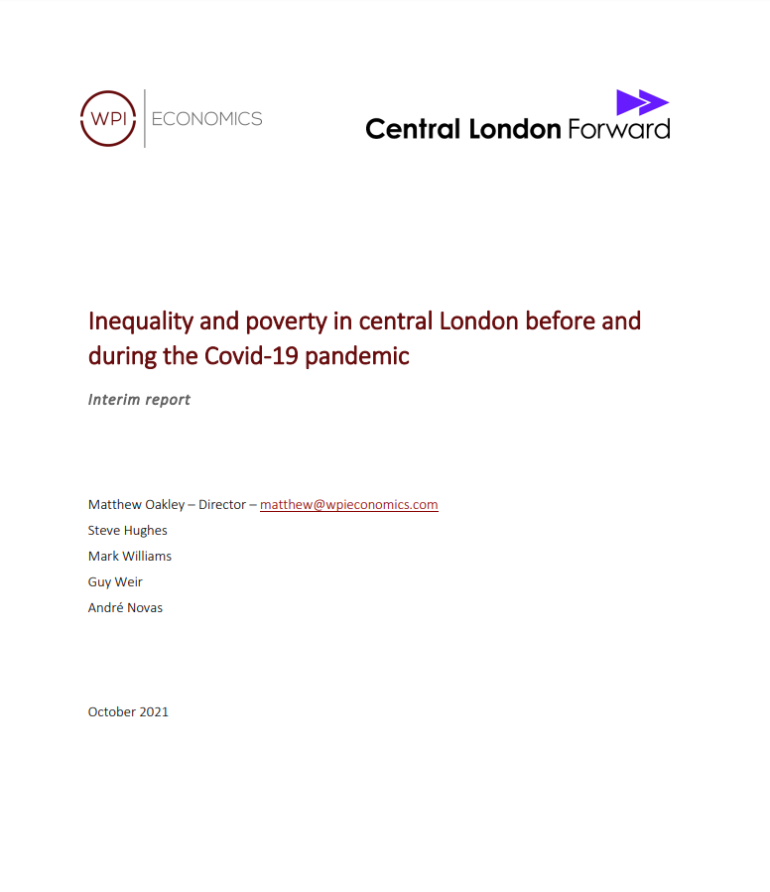
Our report for Central London Forward – a cross-party group of the 12 central London local authorities – has highlighted that London was the most unequal part of the UK on the eve of the pandemic, and warned that the coronavirus crisis has deepened inequalities in the capital. The report found that the capital had high levels of inequality across the labour market, health, and wealth:
Poverty and child poverty – while pay in the capital is higher than the national average, high levels of inequality and high housing costs mean London has the highest levels of poverty in the UK. On the eve of the pandemic, 27% of Londoners were in poverty compared to 22% of people across the UK. Three in five (58%) people in poverty in inner London are in a working household;
Child poverty – on the eve of the pandemic, four in ten (38%) children were growing up in poverty in London, compared to three in ten (31%) nationwide;
Unemployment – London has seen the largest impact on employment, and the largest rise in benefit claimants of any region in the UK due to the pandemic. 6.0% of Londoners are unemployed, compared to 4.6% across the UK. Some groups of Londoners – including young people and those from ethnic minority backgrounds – have been particularly likely to lose their jobs during the pandemic;
Health inequalities – the death rate from Covid-19 was 30% higher in the most deprived fifth of neighbourhoods in London, compared to the least deprived neighbourhoods. Age standardised mortality figures – which adjusts for London’s younger population – show death rates in London were far higher than nationally;
Wealth – while London is a wealthy city, it also has the highest levels of wealth inequality of any region of the UK. The least wealthy 30% of households in London own just 1% of the capital’s wealth; the top 10% own nearly half (43%).
The research finds that while all Londoners have been affected by the pandemic, the impact on disadvantaged Londoners has been greater, and many of the capital’s inequalities have deepened. More deprived neighbourhoods have seen both higher levels of mortality, and a greater increase in unemployment compared to the least deprived neighbourhoods. Similarly, Londoners from ethnic minority backgrounds have seen higher death rates from the pandemic, and a higher increase in unemployment. While better off households have tended to see an increase in savings during the pandemic, low-income households are more likely to have eaten into savings and fallen into debt.
Read the report here.
